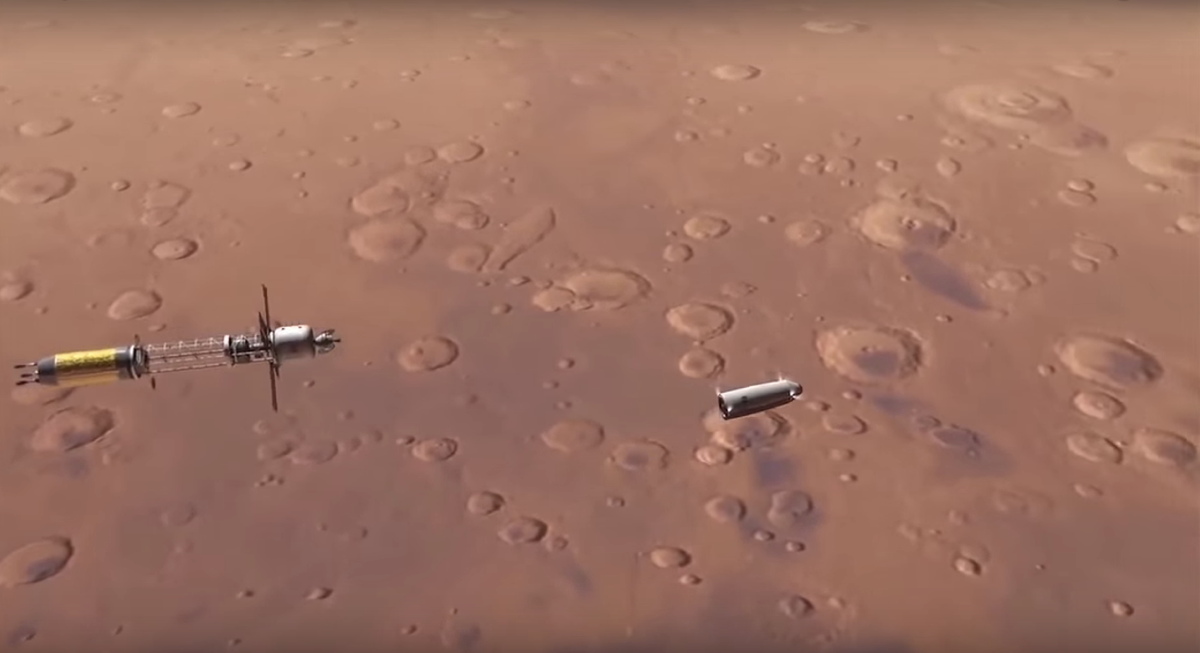Powerful Laser Could Blast Spacecraft to Mars in 3 Days (Video)

It sounds like science fiction, but it's eminently possible, researchers say: Robotic spacecraft could get to Mars after a journey of just three days.
The key to making this happen is photon propulsion, which would use a powerful laser to accelerate spacecraft to relativistic speeds, said Philip Lubin, a physics professor at the University of California, Santa Barbara.
"There are recent advances which take this from science fiction to science reality," Lubin said at the 2015 NASA Innovative Advanced Concepts (NIAC) fall symposium last October. "There's no known reason why we cannot do this." [The Top 10 Star Trek Technologies]
Lubin and his team were awarded one of 15 Phase 1 NIAC grants last year, which gave them about $100,000 to perform initial studies of their project, known as Directed Energy Propulsion for Interstellar Exploration (DEEP-IN).
The list of 2015 Phase 1 NIAC awardees also includes a squidlike rover that could study the oceans of icy moons such as the Jovian satellite Europa, ball-like robots that could explore shadowed craters on Earth's moon and even a proposal to mine asteroids with the help of concentrated sunlight. The hope is that one or more of these technologies will have a huge impact on space science and exploration down the road.
Lubin and his colleagues will use the funding to create a more complete road map for building a fully functioning spacecraft, complete with controllable photon thrusters. The money will also help the team design ultra-low-mass probes, which will be able to travel quickly.
The team aims to eventually place a laser in Earth orbit, which would use photon pressure to power a sail-equipped spacecraft as it travels away from Earth. Photons have quite a bit of stored energy, which would transfer into a push once they hit the sail.
Breaking space news, the latest updates on rocket launches, skywatching events and more!
This method could propel a 220-lb. (100 kilograms) robotic craft to Mars in just three days, Lubin said. A crewed vehicle would take a bit longer to get to the Red Planet — maybe a month or so, he said.
Ultimately, Lubin would like to use the technology to send small probes into interstellar space.
"Within about 25 light-years of the Earth, there are actually quite a few potential exoplanets and habitable things to visit," Lubin said at the NIAC symposium. "There are many targets to choose from."
There are also many potential spin-off applications for the technology, Lubin said. For example, any laser powerful enough to drive a spacecraft over 25 percent of the speed of light is also powerful enough to defend the planet against asteroids. (For comparison, NASA's Voyager 1 spacecraft is now traveling at 0.006 percent of the speed of light.)
"Exploring the nearest stars and exoplanets would be a profound voyage for humanity, one whose nonscientific implications would be enormous," Lubin wrote in a recent paper on the topic. "It is time to begin this inevitable journey beyond our home."
Follow Shannon Hall on Twitter @ShannonWHall. Follow us @Spacedotcom, Facebook and Google+. Original article on Space.com.

Shannon Hall is an award-winning freelance science journalist, who specializes in writing about astronomy, geology and the environment. Her work has appeared in The New York Times, Scientific American, National Geographic, Nature, Quanta and elsewhere. A constant nomad, she has lived in a Buddhist temple in Thailand, slept under the stars in the Sahara and reported several stories aboard an icebreaker near the North Pole.
